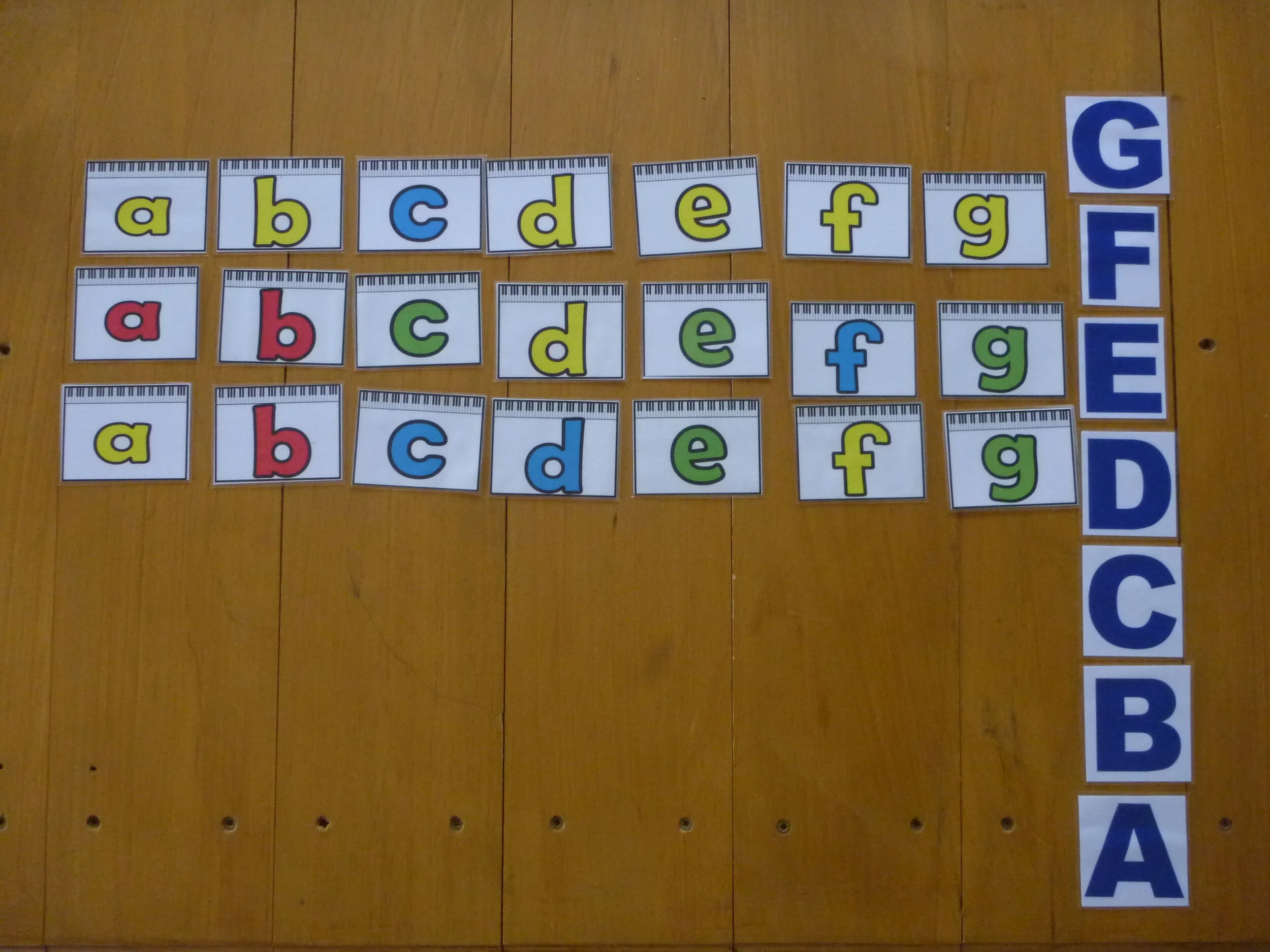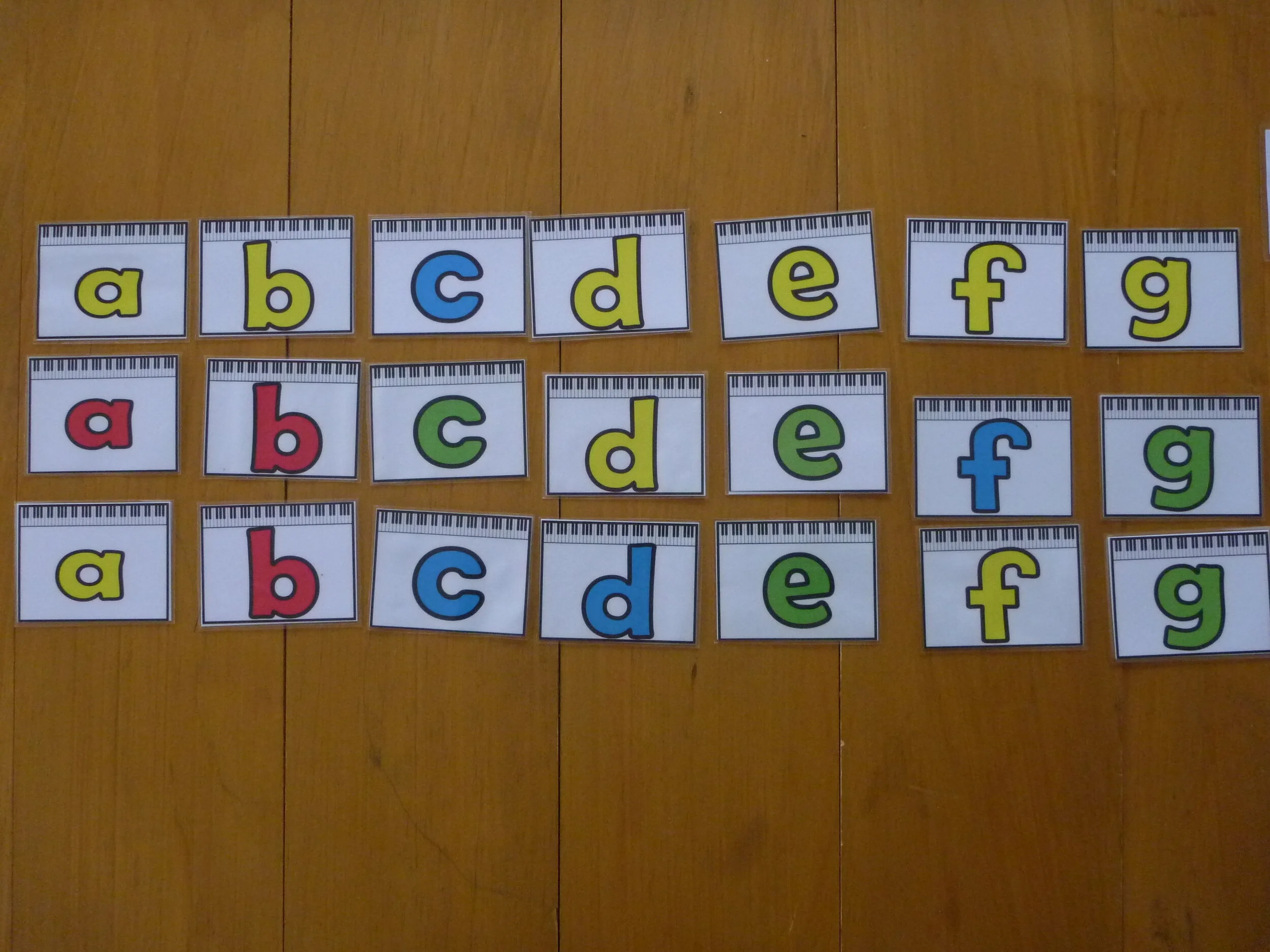Along with learning where the notes are on the piano in relation to the black keys, a pupil must have excellent knowledge of the musical alphabet. This entails knowing the alphabet forwards and backwards beginning from any note in thirds and seconds.
All of my beginning pupils are given a pack that contains (laminated) a two octave keyboard with middle C printed on one of the Cs, the notes separately that are displayed on the keyboard and a set of musical alphabet letters. The notes and letter fit on the ‘keys’ on the laminated keyboard.
The musical alphabet letters that are contained in this pack can be used for the following, either in the lesson or at home. I have described the stages below in regards to learning the musical alphabet. Depending on where the pupil is in relation to learning the position of the notes on the piano, these activities should always be related to the keyboard itself. Whenever using the alphabet cards, try to use them in a vertical line as well as a horizontal line, as this will lead to the reading of the music on the staves.
commence with learning the musical alphabet going forwards from A and then from any note. Initially use the language of ‘side by side’ notes.
the next step is to learn the musical alphabet going backwards using side by side notes, firstly starting with G and then with any note.
follow this same procedure with notes that ‘jump’ a letter. Again, start with A and then use any letter. Apply this forwards and then backwards.
From here the concept of the musical alphabet must be reinforced using a variety of activities and in conjunction with the learning of the position of the notes on the piano.
name the notes on the piano going up of down in seconds and thirds. The teacher will need to be the judge of when the pupil is ready for the use of the language of seconds and thirds.
use the alphabet cards; the pupil puts down one letter, the teacher puts down the following letter.
the teacher or the pupil places a set of letters on the floor or piano stool with a deliberate mistake that the other person has to find.
the teacher should ask questions such as, “is F the name of the note on the piano which is just below G?” Make sure that the questions are true as well as false.’ And, make sure that you refer to the piano after working out whether the question is true or false.
play a game off the piano stool, start say with E, then ask the pupil how far they will need to step to get to F or G and that the size of the step is dependent on whether the notes are seconds or thirds.
one of my favourites ,which I created many years ago, ‘Keyboard Geography"‘. For example, ask the pupil to place their RH number 3 finger on the nearest G. Then cover up their hand with a large book. (Most do not seem to look at the rest of the keyboard for help). Then ask them, play the note that your number 5 is on. What is the name of the note? How far is it away from the G?
use any apps, games or worksheets to reinforce the musical alphabet. Below is a pdf for helping to reinforce the musical alphabet.
The clipart is provided by Dancing Crayons.
www.dancingcrayon.com



